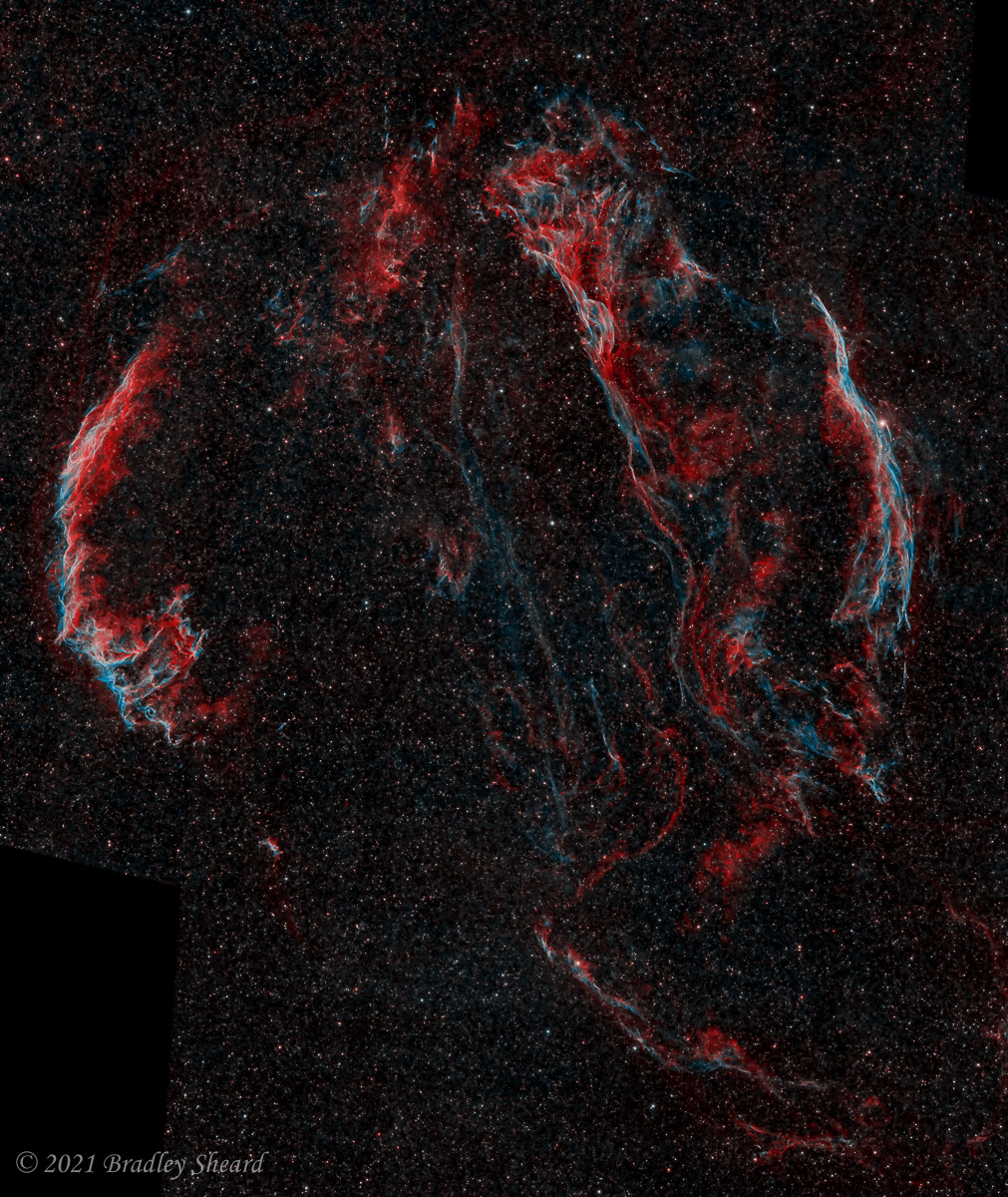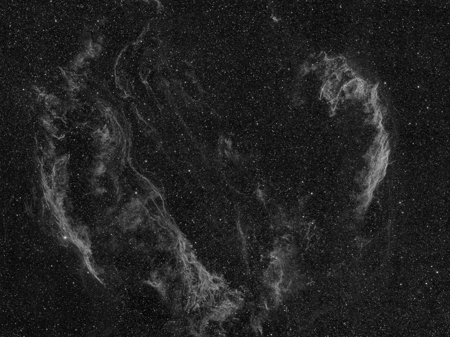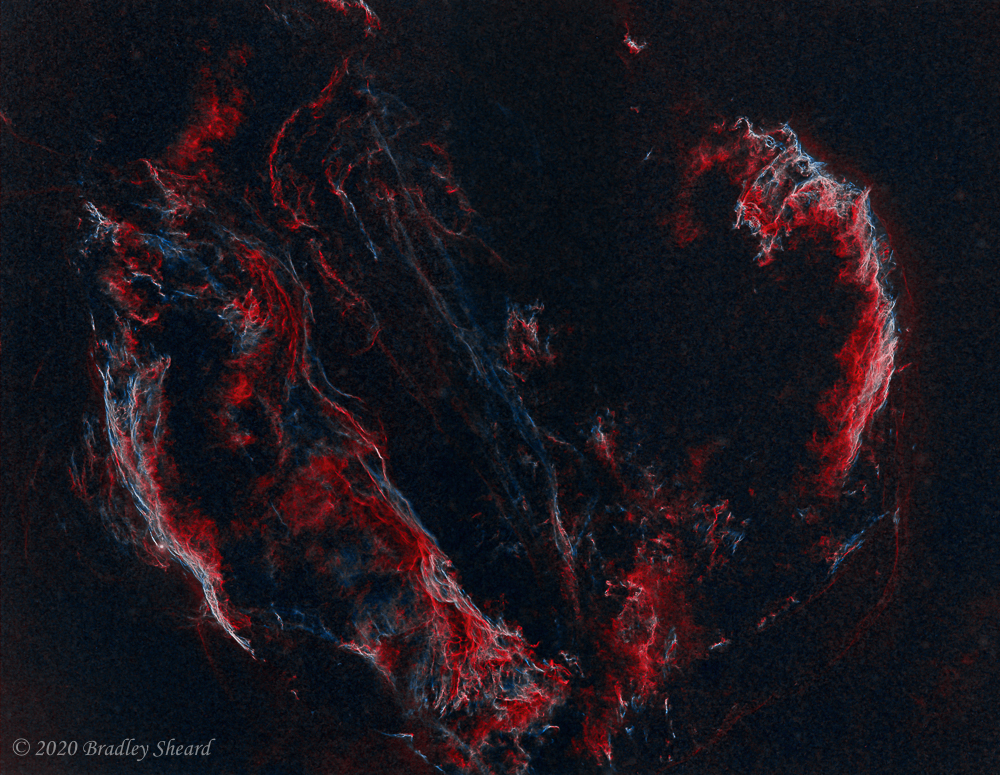Cygnus Loop/ Veil Nebula Complex | |||
| « Previous | Back to Astrophotography Gallery | Next » | |
| Back to Supernova Gallery | |||
The 'Cygnus Loop' or Veil Nebula complex is a large shell of expanding gas in the constellation Cygnus the Swan that is the remains of a supernova explosion estimated to have occurred 10,000-20,000 years ago. Some of the latest research (Reference 1) indicates that this large supernova remnant lies some 735 pc (2396 light years) from our solar system. The complete remnant is quite large (3° 15' x 2° 35' shown here), and its various sections have their own catalogue designations. The bright arc at lower left is often referred to as the Western Veil Nebula or Witches Broom, and carries the designation NGC 6960. At bottom center is a beautiful filamentary region known as 'Pickering's Triangle.' At far right is the Eastern Veil, or NGC 6992 and NGC 6995. Although many searches for the stellar remnant of the supernova explosion have been conducted, no definitive object has been found. | |||
 | |||
| Optics: | Stellarvue SVQ-100 | ||
| Camera: | Starlight Xpress SX-46 | ||
| Exposure info: | 20 minute subs / 24 hours total across 2-frame mosaic | ||
| Filters used: | Astrodon H-alpha, OIII | ||
| date: | August & September 2020 | ||
| color mapping: | Halpha = Red / O3 = Green, Blue | ||
| processing: | Pixinsight-->Photoshop-->Lightroom | ||
The image above is a two-frame mosaic, taken through narrowband filters--filters that allow only a thin band of light at very specific wavelengths to pass through to the digital camera. Two filters were used in the above image: H-alpha (hydrogen, 656 nm) and OIII (doubly ionized oxygen, 500 nm). The resulting image from each filter is then assigned a color channel to make the final, color image. While the color pallete is somewhat arbitrary, chosen for aesthetic reasons--the colors here are a reasonable estimate of what the human eye would see. Shown below are the individual image stacks through each filter that were used for the final image. Below is an extended version of the image above (rotated 180 degrees), to encompass additional area and some of the extended nebulosity of the supernova remnant (4-frame mosaic). | |||
 | |||
| H-alpha filter | OIII filter | ||
 |
 | ||
A new process available in Pixinsight allows for the automatic removal of stars from an image, and the possibility of creating an interesting view of nebula such as this where some of the fainter regions of nebulosity are more prominent: | |||
 | |||
REFERENCES
1. Fesen, Weil and Cisneros, "The Cygnus Loop's Distance, Properties and Envrionment Driven Morphology." Monthly Notices of the Royal Astronomical Society, January 23, 2015
2. Kerrod, Robin "The Star Guide: How to Read the Night Sky Star by Star." New York: MacMillan, 1993
